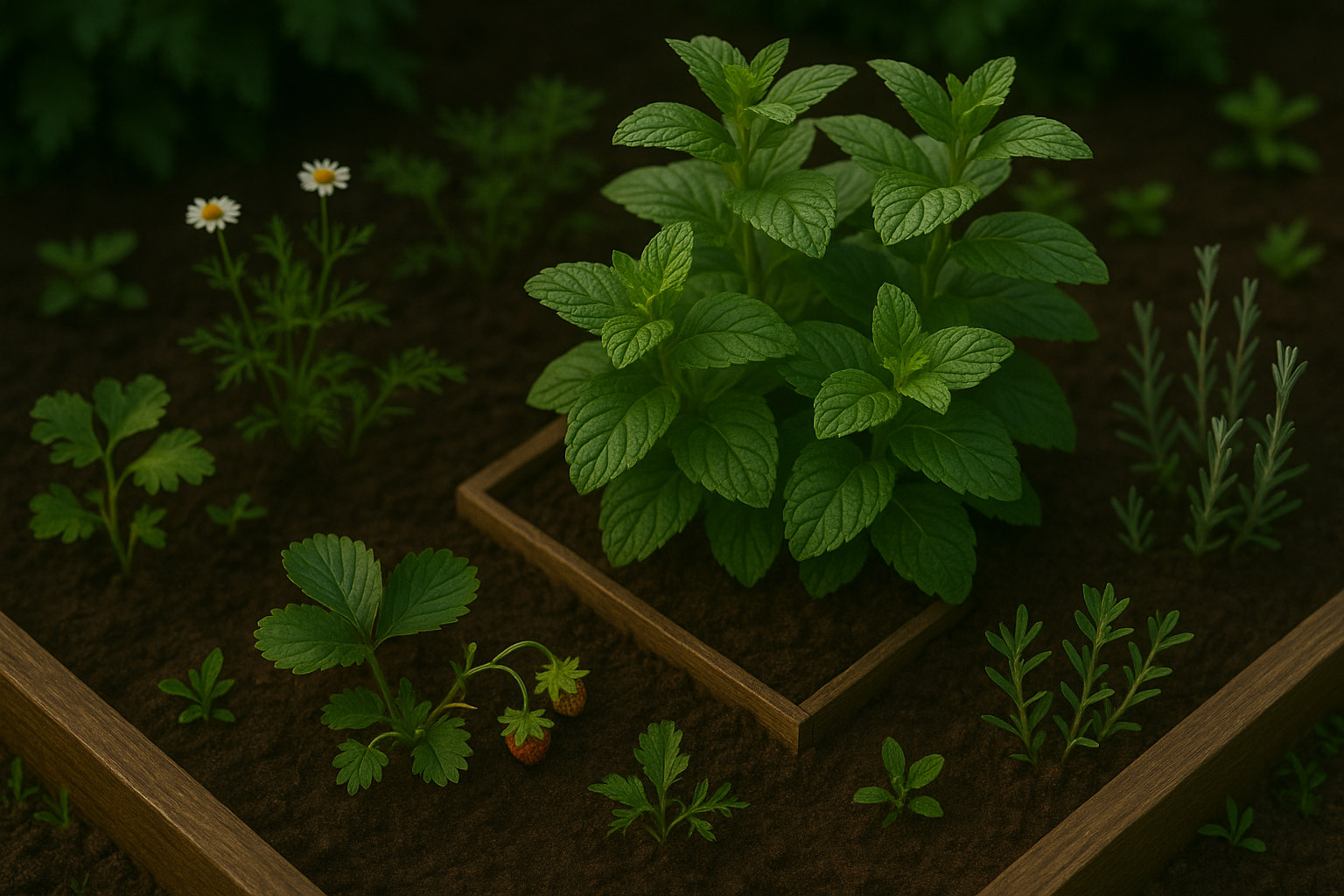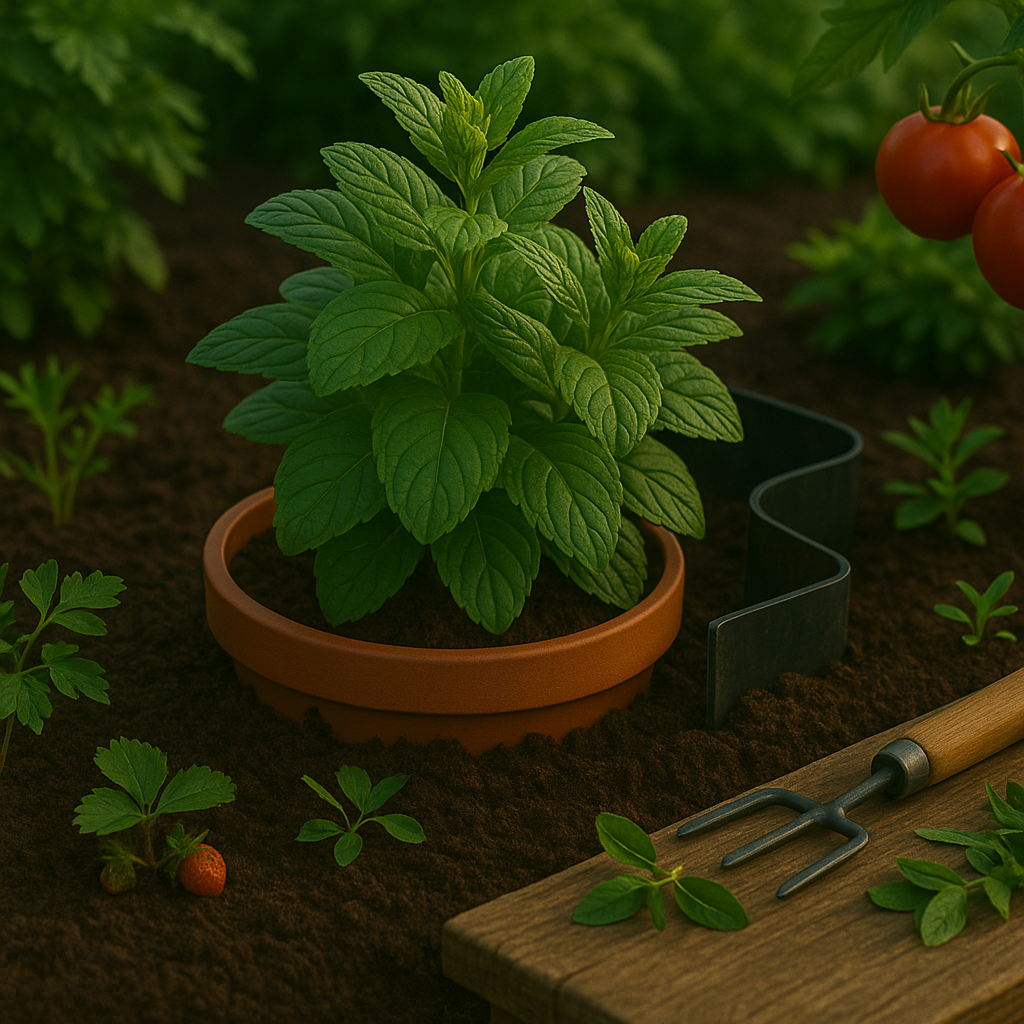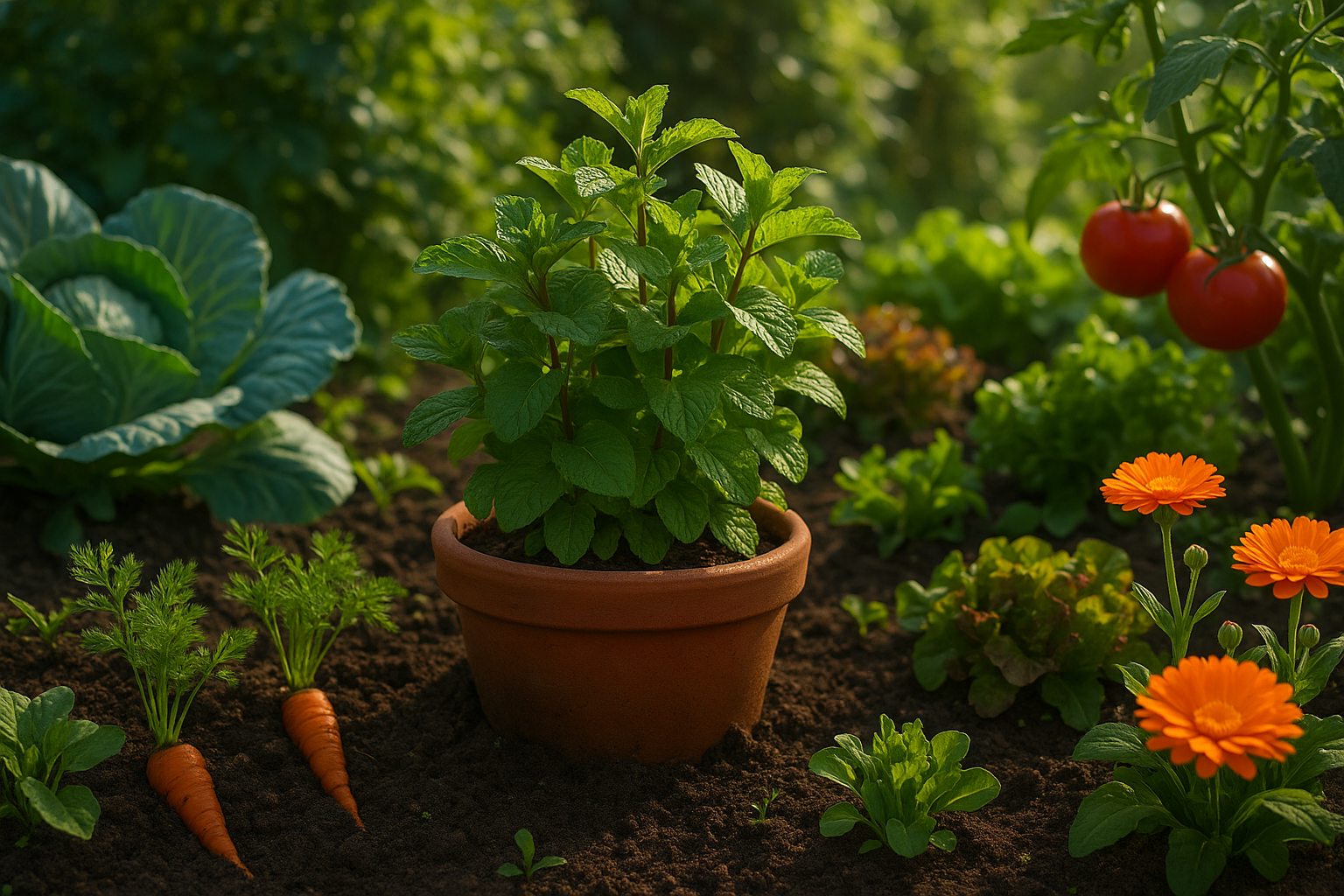Introduction to Mint & Companion Planting
Mint companion plants can make a huge difference in the health and productivity of your herb garden. Mint is one of the most popular herbs for home gardeners, prized for its refreshing flavor in teas, cocktails, desserts, and even savory dishes. While it’s easy to grow, mint has a reputation for being a bit of a garden bully—spreading fast and sometimes crowding out less vigorous neighbors. That’s where companion planting comes in.
This gardening strategy pairs different plants together to help each other thrive, prevent pests, improve flavor, or make better use of space. For example, planting mint near certain vegetables can naturally deter unwanted insects, while some plants can actually tame its vigorous growth. On the flip side, putting mint next to the wrong companions can lead to stunted growth or flavorless harvests.
In this blog post, you’ll discover the best companion plants for mint—including surprising allies that benefit both your herbs and veggies—and which plants you should avoid planting near mint. With these helpful, real-world tips, you can create a thriving, harmonious herb patch at home while getting the most out of delicious, fresh mint all season long.
Why Mint Makes (and Needs) Good Companions
Mint is beloved for its fresh flavor and vigorous growth, but that same vitality can quickly become a headache in the garden. With its sprawling roots and tendency to send out runners, mint is notorious for taking over garden beds if not kept in check.
One simple and effective way to rein in mint’s aggressive spread is by planting it alongside good companion plants. For example, pairing mint with crops like cabbage, tomatoes, or carrots can act as a natural border since these veggies don’t allow mint’s roots to roam freely.
At the same time, mint serves as a valuable companion by deterring pests like aphids and cabbage moths with its strong aroma, and attracting beneficial insects such as hoverflies and predatory wasps that help keep threats in check.
Whether you’re planting mint in containers sunk into the soil or alongside robust root vegetables, proper pairing and physical barriers help manage its spread while maximizing its benefits. Just be sure not to plant mint with other mints or herbs that share similar growth habits, as this can lead to overcrowding and reduced yields for all.
With the right companions and containment strategies, you can harness mint’s virtues without letting it overrun your garden.
Top Companion Plants to Grow With Mint
Mint is a powerhouse companion plant, offering natural pest control and invigorating fragrances to the garden. However, choosing the right neighbors makes all the difference.
Cabbage is a great match for mint because the strong aroma of mint helps deter cabbage moths and other pesky insects—an all-natural alternative to chemical sprays. Carrots also benefit from being planted near mint, as mint’s scent can confuse carrot rust flies, while carrots’ deep roots help aerate the soil for both plants.
Tomatoes and mint form a winning duo: tomatoes appreciate mint’s ability to repel aphids, whiteflies, and ants, leading to healthier, more productive tomato plants. Lettuce, another garden staple, thrives next to mint since the cooling shade mint provides helps keep lettuce crisp and impedes slugs from causing damage.
Peas and beans are often overlooked as mint companions, but the herb’s pest-repellent properties mean fewer aphid and beetle problems, plus its shallow roots won’t compete with these legumes. Calendula is a frequently recommended herbal neighbor—its bright flowers attract pollinators, while mint drives away unwanted bugs, making them a dynamic pest-fighting pair.
Beware Common Myths
Despite its benefits, mint isn’t always the ideal companion for every plant. Some gardeners mistakenly believe mint can be planted freely; in reality, its vigorous growth can overtake beds and compete for nutrients if not contained in pots or barriers.
Mint may also discourage the growth of herbs like parsley and chamomile, so give it respectful distance from more delicate neighbors.
Whether you’re plotting a vegetable patch or a mixed herb garden, strategic mingling of mint with these select plants can optimize plant health, flavor, and minimize pest issues without resorting to chemicals.
Plants That Shouldn’t Be Grown with Mint

When planning your herb garden, it’s important to know that not all plants get along with mint. Mint is a vigorous grower that spreads quickly, often crowding out more delicate neighbors like parsley and chamomile. These gentle herbs can struggle to compete for sunlight, water, and nutrients when planted too close to mint’s sprawling roots.
Strongly aromatic herbs such as rosemary and lavender also don’t make good companions for mint—both prefer drier, well-drained soil, while mint thrives in more moist conditions. Interplanting mint with strawberries is risky, as mint’s invasiveness can overtake strawberry runners and stunt their fruit production.
Similarly, growing mint alongside other herbs like basil and oregano can cause flavors to mingle and muddy, which affects the distinct tastes you’re hoping to achieve in your garden and kitchen. Additionally, mint is susceptible to fungal diseases like rust and powdery mildew, which can easily spread to nearby herbs and berries.
To avoid these issues, consider planting mint in a separate raised bed, container, or even a sunken bottomless pot to keep its spread in check. Keep plants like parsley, chamomile, rosemary, lavender, oregano, and strawberries in their own areas for optimal growth and flavor.
This not only protects your garden’s balance but also lets each plant shine—making it easier to harvest fresh, healthy herbs and fruits throughout the season.
How to Plant & Manage Mint Among Your Companions

Mint is a wonderfully aromatic herb, but it’s also notorious for taking over garden beds if you’re not careful. To harness its benefits as a companion plant—like deterring pests and attracting pollinators—without letting it overrun your space, plant mint in pots or containers.
You can then sink these pots into the ground among your veggies, or keep them above ground to create decorative, movable mint features. Alternatively, use root barriers like plastic or metal edging buried at least 8 inches deep; this blocks those sneaky underground runners.
Leave about 18 to 24 inches between mint and other plants to give everyone enough air and sunlight. Trim or pinch mint stems regularly, especially before they flower, to keep plants bushy and prevent excessive spread.
For watering, aim for consistently moist—not soggy—soil. Mint thrives in rich, well-draining earth with organic matter added, and while it enjoys lots of light, it can tolerate partial shade, especially in hot climates.
In mixed beds, ensure mint doesn’t crowd out slower growers by checking its root zone every few weeks. By taking these steps, you’ll enjoy fresh mint all season long—and give your garden companions a fragrant, helpful neighbor.
Common Mistakes to Avoid with Mint Companion Planting
One common mistake when companion planting mint is letting it take over the garden—mint spreads aggressively by underground runners and can easily choke out less vigorous neighbors like parsley or chamomile. To prevent this, always plant mint in containers or use underground barriers to restrict its roots.
Another frequent error is pairing mint with other aromatic herbs such as basil or rosemary; mint’s strong scent may overwhelm rather than support these delicate plants. Instead, place compatible herbs in separate pots or beds.
Lastly, gardeners often forget to regularly check and adjust their plant arrangements. Plants grow and situations change, so it’s essential to monitor for signs of overcrowding or poor growth, moving plants as needed. By staying vigilant and responsive, you’ll help your garden thrive and keep your companion plants healthy and productive all season long.
Conclusion
Growing mint alongside the right companions can transform your garden by helping deter pests and encouraging healthy growth for both mint and neighboring plants like tomatoes or cabbages. Remember to keep mint in containers or trim it regularly, as it tends to spread aggressively.
Try combining mint with different herbs or vegetables and see what works best in your space—every garden is unique. Don’t hesitate to experiment and adjust your companion planting based on what you observe throughout the season.
With a little care, mint will reward you with its fresh flavor, inviting aroma, and a lush, thriving garden corner you’ll love.
